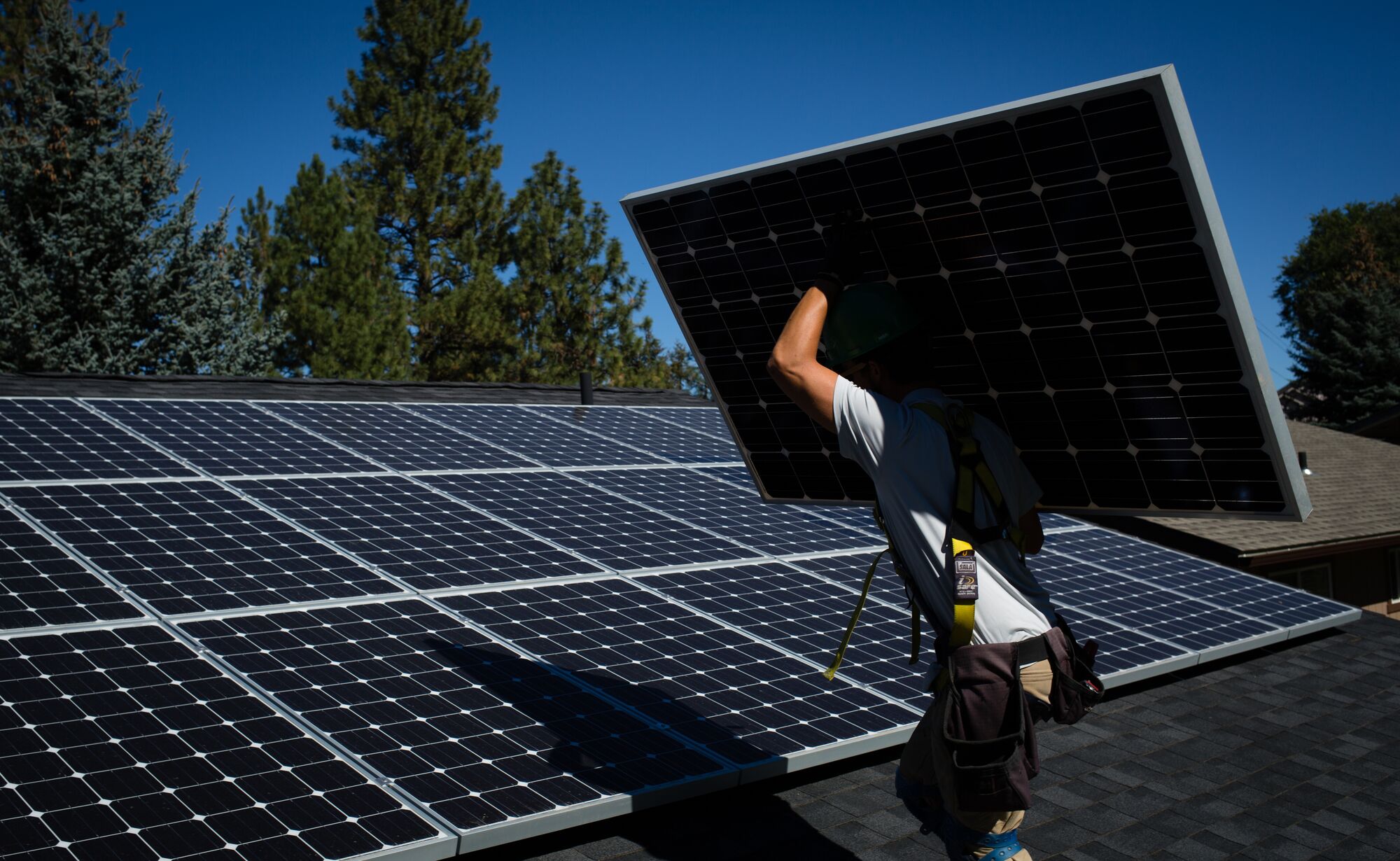Coming In 2024: New Ways For Homeowners to Save Money While Fighting Climate Change
Tax credits in the Inflation Reduction Act can help you electrify your home.

This page was published 3 years ago. Find the latest on Earthjustice’s work.
Getting away from fossil fuels — and saving money — just got a lot easier. If you’re looking to upgrade your home to be cleaner and more energy efficient, the federal government is offering some massive discounts thanks to the now enacted Inflation Reduction Act. And more money is expected to become available in 2024.
The IRA’s numerous tax incentives cover a lot of ground. There are some helpful calculator apps like this one from the nonprofit Rewiring America that let you see the potential for savings throughout your home.
Even better: the IRA gives homeowners a $150 tax credit to offset the cost of a professional energy audit, a move that almost aways pays for itself in rebates and increased energy efficiency.
When it comes to saving money, here are a few concrete ways you can get started:
Save up to $8,000 on a Heat Pump
Heat pumps are the fastest way to eliminate the use of fossil fuels to heat and cool your home, saving you money, preventing dangerous gas accidents, and avoiding the volatile prices of gas, oil, and propane that fuel traditional furnaces. They use electricity to move heat from a cool space to a warm space, making the cool space cooler while warming the warm space. Heat pumps come in a number of varieties, including geothermal heat pumps, ducted or ductless air-source heat pumps, and absorption heat pumps. With this upfront consumer incentive, heat pumps costs are now the more affordable option across the country — even in the coldest and hottest areas.
The IRA offers a tax credit of up to $2,000 for the purchase of a heat pump; low-income households can now get a rebate of up to $8,000 on installation.
Heat pump dryers can help you dry your clothes in a more energy efficient way, too — there’s a potential rebate of $840 for switching over. You can also replace your water heater with a heat pump water heater—with a rebate of up to $1,750.
Learn more: Whitehouse.gov – Clean Energy for All
Save up to $840 Towards Switching to an Induction or Electric Stove
Induction stoves are extremely fast at heating pots and pans, leaving gas stoves in the dust. They’re the choice of preference for many chefs and serious home cooks. They’re also considerably better for the environment than gas stoves, which require tapping into a fossil fuel source. Switching to an induction stove can literally be a lifesaver, avoiding gas leaks or even deadly accidents.
Children living in homes with gas stoves are 42% more likely to have asthma.
The Inflation Reduction Act offers a rebate of up to $840 for an electric (including induction) stove, cooktop, range or oven.
Learn more: Consumer Reports – What the Inflation Reduction Act Could Mean for Your Next Appliance Purchase
Save $1,600 by Sealing Drafty Windows
Improving your home’s insulation does three positive things: it cuts down your electricity bills, it reduces energy use , and it makes your home more comfortable.
Thanks to the IRA, moderate- and low-income households are eligible for rebates of up to $1,600 on improving insulation and sealing leaks.
Learn more: Kiplinger – Save More on Green Improvements Under the Inflation Reduction Act
Save Thousands on Installing Solar Panels or Tapping Into Community Solar
The law’s Residential Clean Energy Credit is one of its most powerful provisions when it comes to saving money to electrify and improve your house. It offers a credit of up to 30% to households that invest in clean energy such as solar, retroactive to the start of 2022. Solar panel projects can range into the tens of thousands of dollars to initially install, so that can equate to thousands of dollars in savings.
And the IRA includes grid-wide incentives to encourage mass conversion to cleaner energy, including community solar power projects that can help whole neighborhoods lower their energy bills while reducing dependence on polluting fossil fuels.
Learn more: Consumer Reports – How the Solar Tax Credit in the Inflation Reduction Act Works
Save Thousands on Purchasing a New or Used Electric Vehicle
Those looking for a climate-friendly vehicle can now take advantage of major tax credits for purchasing new or used electric vehicles. The law offers a tax credit of up to $7,500 towards the purchase of a new electric vehicle. For those purchasing a used electric vehicle, consumers may be eligible for a tax credit up to $4,000, depending on their income level.
The law also includes an EV charging credit to help consumers install EV chargers at home that will cover 30% of the equipment cost.
It’s important to note that these tax credits come with income requirements in addition to manufacturing requirements for new electric vehicles. Make sure to do your research to ensure you and your vehicle qualify before making a decision.
Learn More: Plug In America – Inflation Reduction Act (IRA) EV Incentives, Explained
Earthjustice’s Clean Energy Program uses the power of the law and the strength of partnership to accelerate the transition to 100% clean energy.
Established in 1989, Earthjustice's Policy & Legislation team works with champions in Congress to craft legislation that supports and extends our legal gains.